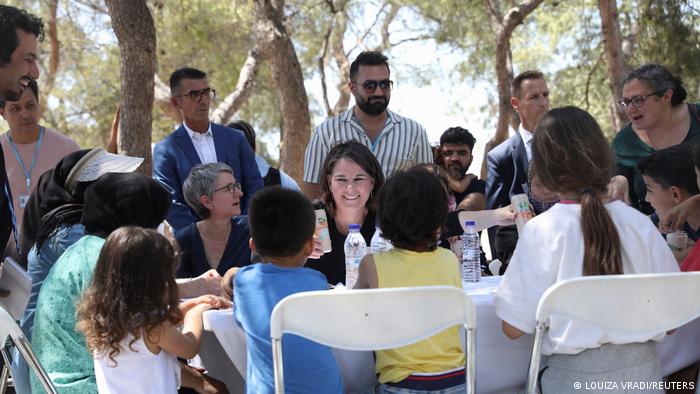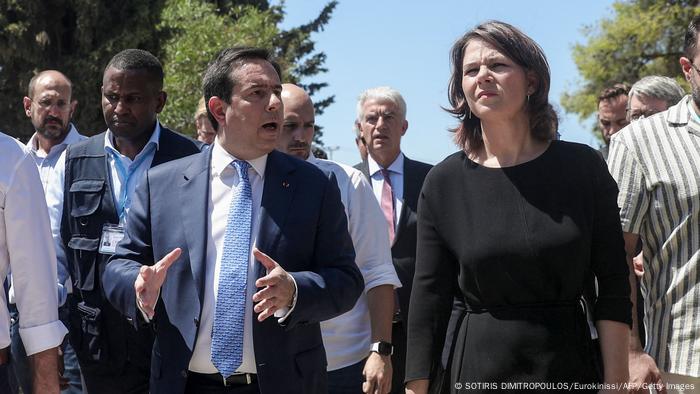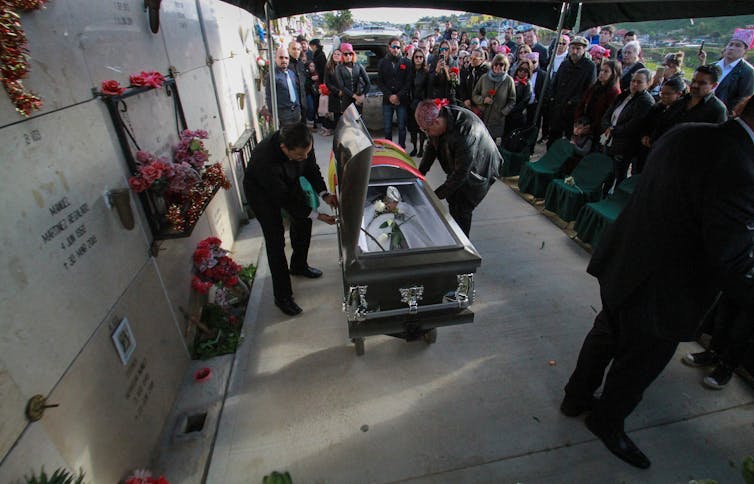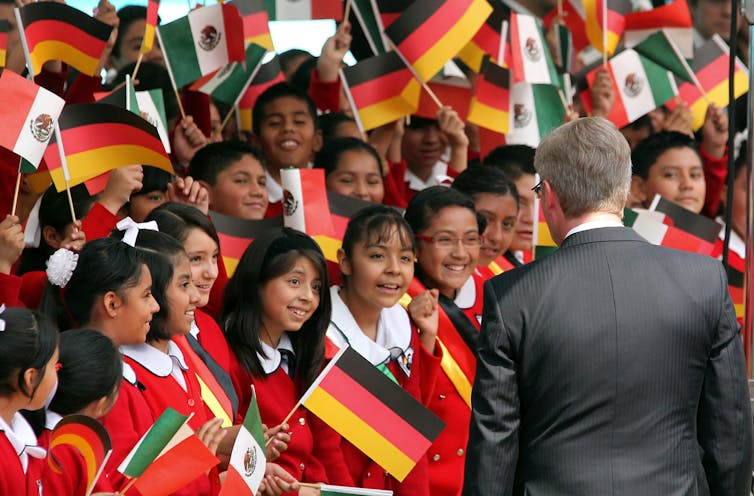We live in a time when it’s become a boring cliché to say that democracy is under attack. Whether it’s an ultra-reactionary Supreme Court, a nationwide Republican assault on voting rights, a MAGA movement that hopes to put an amoral power addict back in the presidency in 2024, a gathering backlash against women’s rights and LGBTQ rights, or the very structure of an oligarchical, billionaire-dominated political economy, circumstances in the U.S.—and abroad—are hardly encouraging for people who value democracy and human rights. It seems that things get bleaker every year, so much so that it can be difficult to have any hope at all.
There is, however, at least one glimmer of hope for democracy, and it comes from a source that might initially, to many people, seem rather unrelated: a renascent labor movement.
Given that the primary role of unions is to advocate for the interests of their members on the job, one might wonder how they could play an essential part in protecting and revitalizing the very different institution of political democracy. How can organizations with such a particular mission, a seemingly narrow economic one, serve as a buttress for the universal interest of democracy itself? Actually, according to polls, two thirds of Americans approve of labor unions, suggesting they understand what a constructive force unions are. If people knew the real history of organized labor, however, the number would probably be close to 90 percent.
So let’s take a look at history to gain some insight into why labor organizations are so fundamental to democracy, and why it’s so predictable that their decline in the last forty years has led to a political crisis and the rise of neofascism.
The origins of democracy
The very establishment of democracy in the first place—universal suffrage and equal voting “weight” across classes—was in large measure the achievement of unions, labor-based political parties (whether called Socialist, Social Democrat, Labor, or some other name), and mass working-class protest. To quote one scholar, throughout the long struggle across the West to broaden the franchise, from the nineteenth to the twentieth centuries, the labor movement “was the only consistent democratic force in the arena,” playing a “vital role” at nearly all stages in most countries. In Britain, for example, decades of labor organizing and mass demonstrations, from the Chartists of the 1830s to the working-class Reform League of the 1860s and further union agitation up to the 1880s, were a crucial precondition for the enfranchisement of all men. By the early twentieth century, the new Labor Party also supported the women’s suffrage movement.
To take another example, that of Belgium, a comprehensive study observes that “working-class pressure and particularly the use of the political strike were constant features of the process of Belgian democratization from the 1880s on.” As elsewhere, it took decades of struggle to overcome the hostility of the propertied classes—many urban capitalists, agrarian landowners, and the Catholic establishment—but, in alliance with Liberals, the Belgian Labor Party was finally able to establish full male democracy in 1919.
Waves of democratization occurred in the aftermath of the two world wars, and in all or nearly all cases, labor and its representatives were catalysts. Germany’s Weimar Republic, which instituted universal suffrage, was a creation of the labor-based Social Democrats. In Sweden, years of strikes, worker demonstrations, and Social Democratic pressure in Parliament culminated in the passage of universal suffrage by 1920. The achievement of full parliamentary democracy after World War II in Italy, France, Austria, Canada, eventually Japan, and other countries was, of course, a result of the world-overturning mobilization of the working class and the Left against fascism, which was defeated primarily by Communists.
What about the United States? “Full” democracy in this supposedly freest of countries didn’t exist until the late 1960s, after the passage of the Civil Rights Act and the Voting Rights Act. We’re accustomed to thinking of these legislative accomplishments as the fruit of a religiously grounded movement organized around Black churches in the South, but in fact, “the long civil rights movement” of the 1930s–1960s critically depended on labor organizations such as the Communist Party (in the 1930s) and industrial unions. Historians have called it “civil rights unionism.” Communists organized Black and white workers to challenge racial discrimination in employment and politics, not least in the savagely white supremacist South, and unions in the CIO, and later (after 1955) the AFL-CIO, continued this sort of work even in the repressive political climate of the Cold War. The AFL-CIO and most of its affiliated unions funded the Civil Rights Movement, actively supported its legal initiatives, and, in the case of the UAW, sent staff members into the Deep South to assist with voter registration drives. Indeed, some of the movement’s major leaders, from A. Philip Randolph to E. D. Nixon (who organized the Montgomery bus boycott and chose Martin Luther King Jr. to lead it), came from a union background.
Conversely, it wasn’t only political democracy that was at stake; the movement aimed to emulate labor movements elsewhere and establish social democracy. The 1963 March on Washington, for example, included in its demands decent housing, adequate education, a massive federal works program, a living wage for everyone, and a broadened Fair Labor Standards Act. King, himself, later became a socialist and helped organize a vast Poor People’s Campaign, though he was assassinated before it came to fruition.
Even recent struggles against authoritarian governments have been largely driven by labor organizations and worker protests. From Spain in the late Franco years, Chile under Pinochet, and Argentina under neo-Nazi generals, to the Arab Spring of 2011, workers and unions have not only, through collective action, destabilized despotic regimes but have often led the resistance that overthrew them. This isn’t surprising, since the working class is typically the group that suffers most from a lack of democracy.
In short, it is hardly an exaggeration when yet another scholarly study concludes that “the organized working class appeared as a key actor in the development of full democracy almost everywhere.”
Organized labor means solidarity
Evidently, then, unions and other labor organizations aren’t as “narrowly economic” as it might seem. They do exist to raise wages and expand benefits for their members, and to enhance job security and increase workers’ control over their work, but their functions extend further for two reasons. First, the economic well-being of workers isn’t determined only on the job or through collective bargaining; it is a profoundly political issue, intrinsically connected with government policies and the very structures of the political economy. So there are powerful incentives to get involved in politics, whether that takes the form of mass protests, creating political parties, lobbying, or whatever.
Second, unions are, in the end, little else but their members. They are themselves, or should be, democracies. What the membership desires, therefore, is (ideally) what the union pursues. The guiding principle of business is to make profit, at all costs; the guiding principle of organized labor is simply to empower people, who can themselves determine what their goals are. So if they decide that their goal is to democratize society—as they very well might and often have—then that’s what they’ll try to do.
For both reasons, most of the time and over a long period, the large-scale thrust of labor organizations is to increase democracy: political and social democracy, and ultimately, perhaps, economic democracy, in which workers oust the boss and run the workplace themselves. The sheer size of the membership and (frequently) the immense resources of organized labor mean that the efforts can have momentous effects.
In the absence of strong unions, on the other hand, “the general prey of the rich on the poor,” as Thomas Jefferson described it, can take truly savage forms and go to lycanthropic extremes. Income and wealth inequality can skyrocket; billionaires can pay trivial tax rates of 3% or 4%, far lower than the rates that most wage-earners pay; agencies like the Occupational Safety and Health Administration that exist to protect workers’ rights can be gutted and hamstrung; vast networks of far-right dark money, political organizations, and media infrastructure can spring up unopposed by comparable networks on the left; reactionaries find it easier to be elected and to appoint fellow reactionaries to the judiciary, which subsequently eviscerates voting rights, opens the floodgates to corporate political spending, makes it more difficult for workers to organize, and overturns Roe v. Wade. In general, the decline of unions means relatively untrammeled rule by big business, which itself means oligarchy.
Millions of working people who might have found a home in organized labor, as they did in the mid-twentieth century, become socially unmoored and fall prey to far-right media, lunatic ideologies, racist demagogues, and conservative Christianity. The human need for belonging, for interpreting one’s misfortunes and finding meaning in something larger than oneself, can be fulfilled in either rational or irrational ways. It’s rational for wage-earners to join economic and political organizations that fight for democracy in all its forms; but when such organizations have an anemic social presence, people who have been bombarded by well-funded right-wing propaganda may irrationally join movements that, in effect, seek to strip them of their rights and eliminate democracy itself.
In these circumstances, the priorities of liberals, from abortion rights to anti-racism to environmental legislation, will meet failure after failure because their mass base begins to shrink, to be less readily mobilized, and to feel ever more alienated from the political system. The “professional-managerial class” isn’t enough of a mass base in itself, notwithstanding the apparent belief of two generations of Democratic leaders that it is. We’re seeing the dismal collapse of this illusion play out right now, along with the collapse of the attendant ideology, an identity politics evacuated of class content (which means, more exactly, that it is, in fact, a class politics, “the politics of the left-wing of neoliberalism,” to quote Adolph Reed). After all, a major reason twentieth-century liberalism ever had any success in the first place, from the 1930s to (in an increasingly attenuated form) the 1990s, was that it had organized labor on its side, and the financial, cultural, and human resources of organized labor. It turns out that when you not only take your popular constituency for granted but collude in its decimation, sooner or later your political fortunes—the fortunes of the Democratic Party and liberalism—decline.
Any liberal who actually cares about saving democracy should be cheering the resurgent labor movement and scrambling to support it in every way possible. In the long run, the only alternative to an authoritarian and neofascist politics is a labor politics. At some point you have to decide which side you’re on.
Even the so-called “cultural” issues dear to liberals have for generations seen active support from labor. In addition to anti-racism and the Civil Rights Movement, labor has often marched beside feminists in the fight for women’s rights, whether pay equality, the Equal Rights Amendment (by the early 1970s, that is), or reproductive rights. Few writers have expressed themselves on these subjects as eloquently as the socialist leader Eugene Debs in 1918:
Freedom, complete freedom, is the goal of woman’s struggle in the modern world… She, the mother of man, shall be the sovereign ruler of the world. She shall have sole custody of her own body; she shall have perfect sex freedom as well as economic, intellectual and moral freedom, and she alone who suffers the agony of birth shall have control of the creative functions with which she is endowed.
The natural tendency of organized labor is toward solidarity with all oppressed groups. No other social force is equally equipped to defend everyone and everything under attack today: women, minorities, immigrants, the welfare state, the rule of law, and democracy. No other social force is comparably universal or has a comparable interest in resisting the predations of the oligarchy. No other force offers as much hope for humanity as the cause of labor. For labor is, precisely, the cause of humanity.
It is the duty of all believers in freedom and democracy to take up the banner of labor.
 Facebook
Facebook







